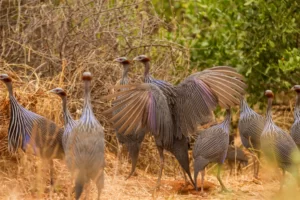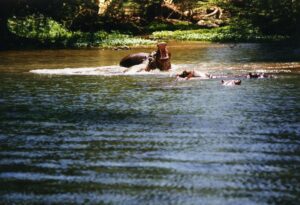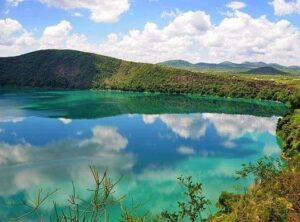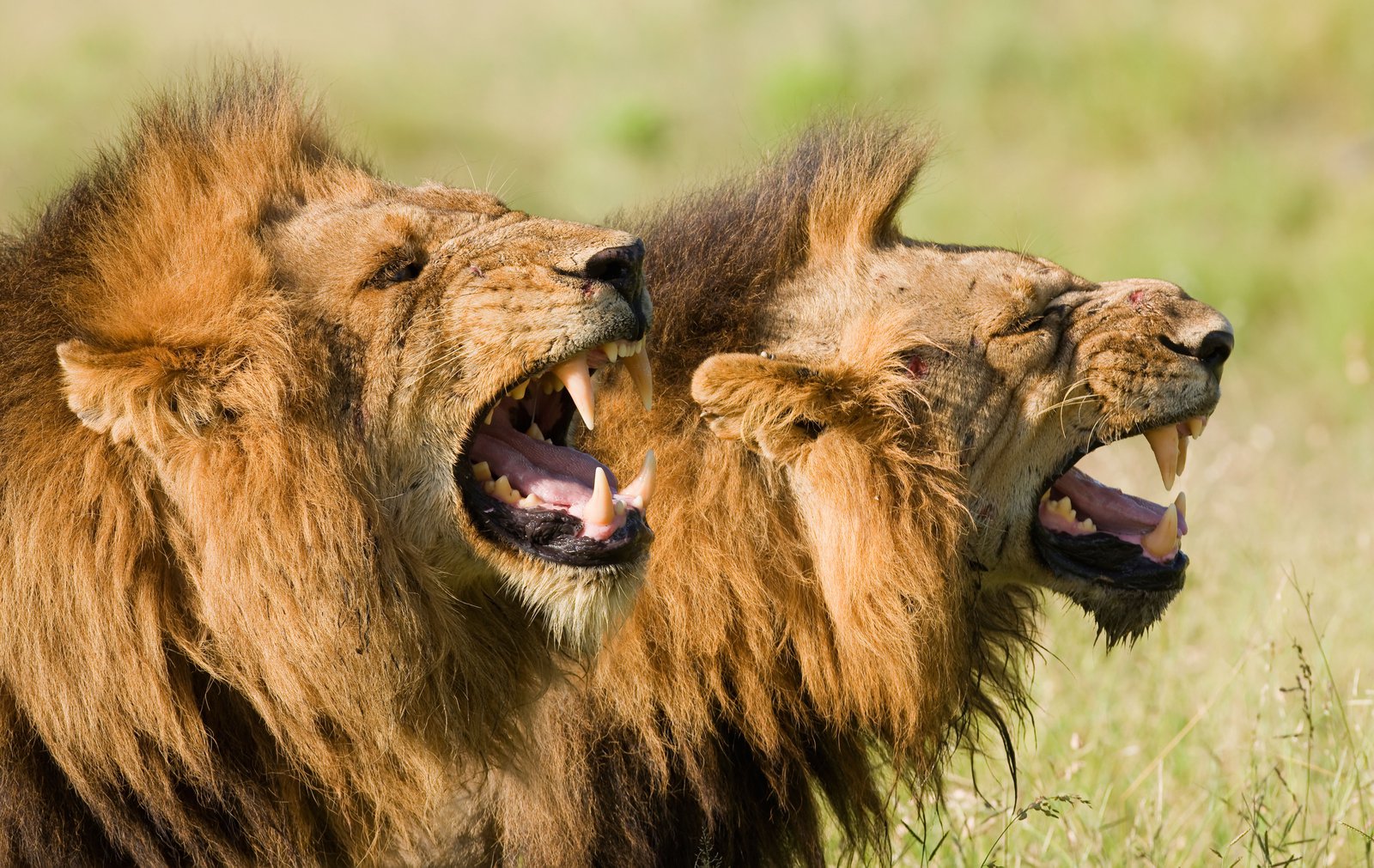Everything about Tsavo West National Park is extreme and striking. The contours and variety of its land, the deep colors of desert, sky and springs, and the surprise of nearby wildlife emerging from the scrub.
The park is an immense panorama of savannah broken by dark volcanic lava beds, unexpected vistas, ancient baobab trees and lush oases fed by underground springs.
You can find Africa’s “big five” here in the dense foliage searching for game and sustenance as they have for millions of years. The famous Tsavo lions and herds of red dust elephants are unique to this land. In fact, Tsavo hosts Kenya’s largest elephant population.
Keep your eyes open for giraffe as they feast on the treetops and don’t be surprised to see buffalo, leopard and rhino as well, especially at the Ngulia Rhino Sanctuary. Some 80 of these endangered creatures live protected here.
Of course, as you move about the park with your expert guide, you’re sure to spot some of the park’s smaller treasures like the bushbaby, hartebeest, dik-dik, lesser kudo, gerenuk and impala.
And there’s lots of monkeys here! The park’s many acacia trees are a playground to yellow baboons and vervet monkeys who are sure to entertain you with their antics.
Tsavo West is a parade of continuous surprises. The arid grassland gives way to the green paradise of Mzima Springs. At Chyulu Hills you can drive to incredible viewpoints such as Poacher’s Lookout where you’ll be treated to unforgettable vistas and the image of snow-capped Mt. Kilimanjaro in the distance.
And what other park in Kenya offers such exciting opportunities for rock climbing? Scale Kichwa Tembo, the Great Tsavo Chimney or the Ivory Tower on Elephant Rock and be rewarded with incredible vistas of the savannah below.
For sheer abundance and variety of landscapes and amazing African wildlife, Tsavo West has few peers.
About Tsavo West National Park
At 9,065 square kilometers, Tsavo West is one of Kenya’s larger parks. It is separated from its sister park, Tsavo East by the Nairobi-Mombasa highway and rail line.
Location:
The park is in southeast Kenya between Nairobi and Mombasa. It’s relatively close to the beaches of the Kenya Coast and can easily be a 1-day safari for those who wish a quick getaway.
When to go:
The park is open year-round and always accessible.
Best time to visit:
It depends. If you like your scenery greener (as opposed to browner), you desire the best views of Kilimanjaro and the finest bird viewing, then choose the wet season (October to May). But if larger wildlife watching is your thing the best time to visit is in the drier months. The animals are easier to spot as they venture to the rivers and watering holes.
Operating Hours:
The park is open from 06:00 hrs. to 18:00 hrs. daily. Note: One can only walk or hike in designated areas and only in the company of a Kenya Wildlife Services ranger.
Getting there:
By road – you can book a tour with Pride Drive Tour Solutions from the coast or Nairobi.
Air – chartered aircraft can land at the park’s multiple airstrips at Chyulu, Mtito Andei, Tsavo, Jipe, Maktau, Kasigau and Ziwani gates.
Railway – take the Nairobi-Mombasa railway which runs right through the park.
Things to do and see
Shetani lava flow
This hardened lava flow is only a few hundred years old. Shitani is the Kiswahili word for ‘devil’. When villagers saw the flaming lava erupting from the earth, they imagined it was the coming of the devil into their world.
Bird watching
Over 600 types of birds have been spotted in the park. The area is a feast of migratory birds such as African skimmers, goshawks and palm nut vultures. Some more familiar species such as ostriches, buzzards, kingfishers, hornbills and herons are also plentiful here. Other treats like the golden-breasted starling and orange-bellied parrot can be spotted as well.

Roaring Rocks
Named for the persistent whistling of the wind and the constant buzz of nearby cicadas, this outcropping is an easy climb and a wonderful place to spot eagles and other birds of prey cruising nearby.
Mzima Springs
Perhaps the most special locale in the park, this lush spring is fed by over 200 million liters of clear water daily. Mzima means “life” in Swahili and this life sustaining oasis attracts a rich assortment of elephants, hippos, crocodiles, zebras and other wildlife to its raffia palm shores. There are plenty of nature trails and even an underwater observation platform.

Lake Jipe
There’s still more bird and aquatic life to explore at this stunning lake fed by the run-off from Mr. Kilimanjaro. You can take a water safari on the lake and explore the nearby wetlands, teeming with wildlife.


